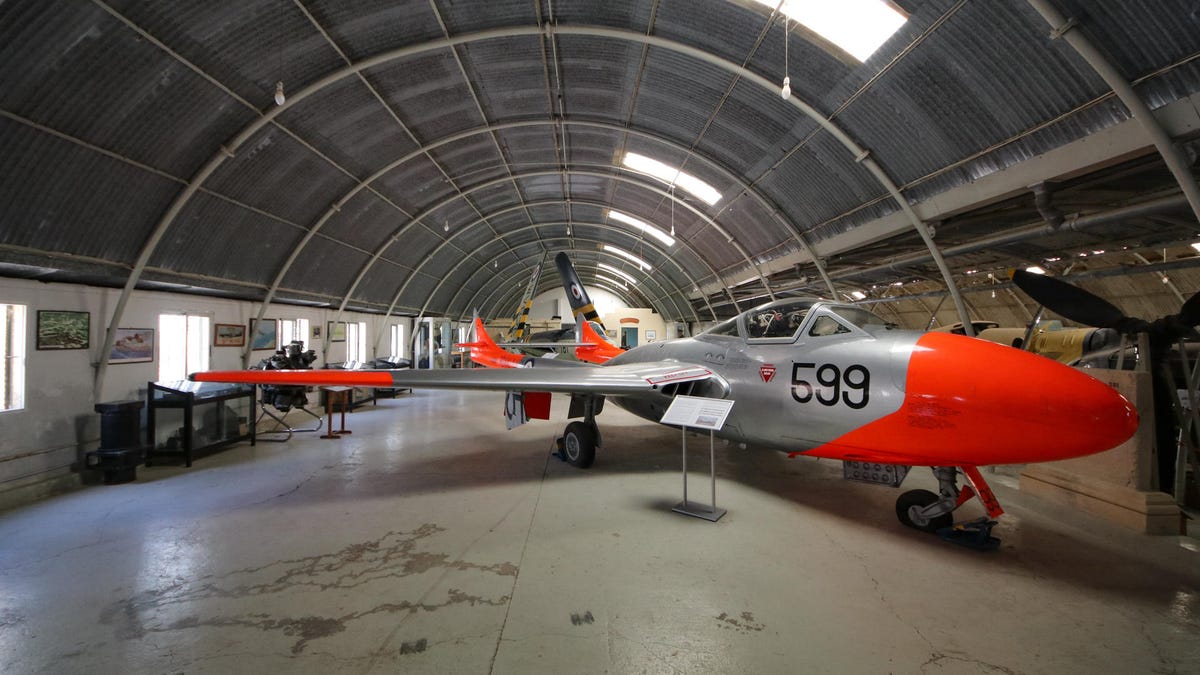 Why You Can Trust CNET
Why You Can Trust CNET Maltese falcons: An island museum full of beautiful aircraft
From the WWII-era Hurricane and Spitfire to the newer Meteor, Sea Hawk and Vampire, here's a full tour of the Malta Aviation Museum.

For centuries Malta was the center of the world. Well, the European world anyway. At roughly the geographical center of the Mediterranean, and perhaps even more importantly, in the narrow space between Sicily and Africa, Malta has long been an important military location.
For navies, at least. It's perhaps not where you'd expect to find an air museum. The British had an airbase here from the '30s to the '50s, and on its former grounds is the Malta Aviation Museum, a small but interesting collection of aircraft in a series of hangers near the center of the island.
A Gloster Meteor, a de Havilland Vampire, a Fiat G.91 and more awaited me after a short walk, a bus and another short walk. Here's what it looks like inside the aging hangars and Nissen huts.
Island gem
It's not the heat, but the humidity. It's such a common refrain it's trite. But it's also true. Temperatures in the high 80s (30-plus Celsius) aren't necessarily bad. Temperatures in the high 80s with humidity so high it's like walking in boiling soup? Not awesome. And yet it's in these conditions that I miss my bus stop and have to walk 25 minutes to the museum under the hot summer sun.
Oh well. Sweatproof SPF 50 FTW. The museum itself is tucked away among Nissen (aka Quonset) huts repurposed for many other uses. It all feels like a former airbase, so the small sign for the museum is no surprise. Two long huts and two large hangars house the majority of the museum. Right inside the main entrance are two of the best preserved exhibits: a de Havilland Vampire and Hawker Sea Hawk.
As you wander through the facility, a different character emerges. Pieces of a DC-3 sit together waiting for restoration, sunlight beating through the skylights adding an abandoned, mystical quality to the space.
In the back, an entire de Havilland Sea Venom sits in pieces, waiting for reassembly. Pistons, electronics and countless other pieces sit in piles.
In the main hangar, a complete and proud Douglas DC-3 dominates the space, surrounded by smaller aircraft and vehicles. A Fiat fighter jet is on one side, the frame of a famous Huey on the other. Behind, two Gloster Meteors and the nose of a BAC 1-11 airliner.
The last hangar held only two planes when I visited: the iconic Hurricane and Spitfire. These restored beauties have special stories. The Spitfire was stationed on the island and participated in Operation Husky. The Hurricane was also stationed on the island and flew off the HMS Ark Royal. It is thought that an engine fire caused the pilot, Sgt. Thomas Hackston, to ditch at sea in July of 1941. Fifty years later, a diver found the wreck and the family of the pilot was notified. It was the first time they knew what actually happened to their brother. Several years later the plane was recovered and lovingly restored.
Malta is a beautiful place, maybe a little less so at the end of July. Beaches, castles, ruins and more. Perhaps in your explorations, you can slip into the Malta Air Museum. It's a fascinating space in an unlikely place.
As well as covering audio and display tech, Geoff does photo tours of cool museums and locations around the world, including nuclear submarines, aircraft carriers, medieval castles, epic 10,000-mile road trips and more.
Also check out Budget Travel for Dummies, his travel book, and his bestselling sci-fi novel about city-size submarines. You can follow him on Instagram and YouTube.

